Vered Neta's Blog, page 9
November 6, 2023
FULL CIRCLE – Sneak Peek
‘Are you OK? Shall I call an ambulance?’
Ana had no idea why the woman; a stranger, was asking her these questions, until she realised she was sitting on the pavement. She got up, embarrassed and dizzy.
What the hell happened?
‘I’m fine. No need to call for an ambulance,’ she reassured the woman, ‘I’m a doctor.’
Ana walked away towards the bus station. Once there, she sat down and tried to recall what had just taken place.
The last thing Ana remembered was stepping out of the store. A huge group of people had been standing in front of the electrical appliance shop. She remembered thinking how strange it was, and felt compelled to see what they were watching. In the window display, the latest models of televisions were lined up next to one another. All were tuned into CNN showing events taking place somewhere in the world. Ana rarely had any interest in politics or news. She was about to turn and walk to the bus station when her eye caught the images.
Her beloved Prague.
Don’t look back! Ana could hear her mother’s voice calling after her. But she couldn’t stop staring at the scenes unfolding on the screens. Thousands of people marched with signs, calling out for freedom. They were faced with lines of policemen; some on horses and some with guns or batons. She couldn’t believe she was watching it on a screen and not immersed in her own memories. Memories she had worked hard to forget for the past two decades.
That’s when her knees collapsed and she’d blacked out.
How did I end up here?
***
It was Ana’s day off. On any normal day she would allow herself to sleep in and take her time, but today she had errands to do. She never liked leaving the holiday shopping to the last moment, so had decided to get it over with.
By the time she woke up, Dan had done the groceries and prepared a great brunch for her. She always felt pampered by him when he made such gestures. In their first few years of marriage she’d felt spoiled, or worse, like she was taking advantage of Dan’s good nature. When she’d asked him about it, his first response sounded as if he was joking.
‘Can’t a man cook for his wife without being considered a “sissy”?’ Ana had smiled, but wasn’t reassured by it. When she kept asking him about it, he finally told her his motives.
‘I grew up in a family where food was the way to show affection. Food was more than just nutrition: it was a way to celebrate, share and show how much you care for and love your family. Why is it so wrong if I’m the one who does it and not you?’
Ana had finally relaxed, recognising it was Dan’s way of telling her he still loved her after all those years together. In time, she’d started to look forward to it, and appreciated her good fortune of finding such a man.
But today, Ana didn’t have time to linger. She checked the bus timetable and, seeing she would be just in time to catch it, she set off downtown.
The streets were already decorated for Thanksgiving and Christmas.
It feels like they start the celebrations earlier and earlier each year.
Today Ana wanted to get Yael, her daughter, something for Chanukah, the festival of light. This year it took place at the same time as Christmas. Both she and Dan had made a point of celebrating both Chanukah and Christmas, so Yael would not feel different from her friends.
Ana recalled seeing a unique artistic Chanukah in a special shop during the summer months. It was made from clay and each candle holder was shaped like a different fairy, while the backdrop had a colourful Tree of Life symbol. She knew Yael would appreciate it, given her artistic talents. Ana hoped it would still be there.
When she reached the shop, Ana was relieved to discover the Chanukah was still on display. Ana stood outside, taking a second look. Was it as beautiful as she had remembered it in her mind? Yes, it was even more unique and impressive. Ana was happy to discover it was on sale. She paid and asked the shop owner to gift wrap it. She would never have time to do it herself and, even if she did, it would never look as good as they do it in the store. Ana had learned long ago that it was best to leave certain things to the professionals. She was happy that it didn’t take too long.
Stepping outside, she saw the crowd.
***
Serves you right for following a crowd, her inner critic mocked her on the bus back home. You should know better by now!
Arriving back home, Ana realised how late it was. She could hear Yael was home, filling the space with her constant chattering. Her daughter was always talking about people, places and events Ana couldn’t keep track of. She was grateful Dan was his usual attentive self as their only child told yet another involved and long-winded story.
Once dinner was over, Yael went up to her room under the pretence she was doing homework. Both Dan and Ana knew she was more likely chatting with her friends on the phone, but they let it go. They both joked that kids needed to believe they were fooling their parents. Most kids would discover how their parents knew all about their supposed transgressions, once they became parents themselves. It was one of those well-kept secrets parents had; you only discover it when you enter the club.
Dan switched on the TV. He was zapping between the endless channels when he landed on CNN. It was a Breaking News segment that caught Ana’s attention.
‘It’s Prague again,’ she muttered and stopped Dan from turning over. ‘What’s going on? I saw clips of it today on the street. People were glued to the TV shop’s window as if there was a revolution taking place.’
Dan raised the volume. The same images came up: protesters filling the streets of Prague; the notorious riot police trying to beat back the demonstrators, hoping to tamp down the demand for freedom. But it looked like the people seemed to have grown immune to the brutality of the regime. The show of force only motivated them to resist even more. Students were joined by citizens of all ages. The reporters said that more than half a million people were filling Prague’s streets and taking over Wenceslas Square.
Ana watched the scenes with a stoic look; she still couldn’t believe her eyes. She sensed it was real, but couldn’t bring herself to accept it. She was startled as one of the reporters said, ‘Change is in the air.’ She was about to get up from the sofa when Yael strolled into the room.
‘They’re calling it the Velvet Revolution,’ she announced, without taking her eyes off the screen.
‘Yes, they are,’ Dan said. ‘Where did you hear about it?’
‘They’ve been showing us these images for the last two weeks at school, ever since the Berlin Wall collapsed. They’re saying it’s history in the making.’
‘Why do they call it the Velvet Revolution?’ Ana felt out of touch with the conversation taking place between her husband and her daughter.
‘Don’t you know?’ Yael asked her with an astonished tone.
‘You know me; I don’t have time for news or TV.’
Yael stared at her mother as if seeing her for the first time.
‘You’re not interested in news or politics? But it defines our lives and dictates how we live.’
‘No, it doesn’t. You are the only person that defines your destiny. You are the only one that would create or destroy your life, nothing else. And don’t let anyone tell you anything different.’ Ana cringed as she heard a stronger tone in her voice than she’d intended. I sound like my mum.
‘Why are you so against it?’ Yael asked.
Dan was about to answer, but Ana silenced him with a look.
‘Nothing new. They think “change is in the air,” but they have no clue. I’ve been in that movie, and it didn’t end well.’
‘You never talk about your home country. Why is that?’
‘I believe there is no point in looking back.’
‘But I want to know about your past,’ Yael pleaded, ‘I want to know you.’
Ana looked at Dan. He shrugged his shoulders, then nodded.
‘Maybe it’s time?’ he said. ‘You don’t want her to be as clueless about you as you were about your mother… Would you?’ Dan couldn’t have said a more powerful sentence to convince Ana.
‘Well, I guess,’ Ana sighed, looking at her eager daughter, ‘it’s time you heard how I arrived in the United States. But first, you need to understand who I was.’
CHAPTER TWOPRAGUE – JUNE 1966Ana was standing on the stairs of her high school with her classmates for the traditional graduation photo. Their school was a typical old, grey building; ugly but functional. The party wouldn’t spend much money on buildings with the sole function of educating young people. Everyone and everything was supposed to be uniform; a conformity factory. There was no room for individuality. People were supposed to follow the party’s doctrine no matter what.
The school faced one of the oldest churches in Prague. It was a constant reminder of what old Prague used to be: the centre of culture, art, and beauty. For six years Ana would take her breaks on those steps and take in the splendour of that building. The church had since been shut down when the Communist Party took control over the country. Even so, nothing could ruin the magnificence of that church. The sun would play on its stunning stained glass; the ornamental baroque sculptures decorating the spiral of the tower. Ana loved running her fingers on the wooden doors of the church just to feel the carving of the old stories in them. It used to give her strength when she was doubting herself, or when things looked bleak. The sight of the church was the one point of beauty in her day.
Standing on the first row of the stairs, Ana could see Pavel and Helen, her parents, in the crowd. Pavel towered over everyone else and was easy to spot. But Ana could just see her tiny doll-like mother standing next to him. As usual, Pavel was holding Helen’s hand as if making sure he would not lose her in the crowd. Ana couldn’t remember a time when her parents were not lovingly touching each other. There were times she believed they came into the world united by an invisible link. Now, when she looked at them, they were both shining with pride. She’d graduated with honours and her speech at the ceremony was already hailed as one of the best and original speeches the school had heard for many years.
Ana knew her future was promising. Unlike many other youngsters, she knew what she wanted to do and had it all planned out. Her final interview at Charles University would take place the following week. Thinking about that interview made Ana nervous. She was a problem-solver: exams and tests were easy for her. In contrast, she found interviews more daunting. She had no idea what they’d ask her or what they expected to hear. What answers should she give that would guarantee her a place in the prestigious medical school she had her heart set on? She didn’t know anyone who had ever managed such a feat. Most people she knew didn’t go to university, as it was considered too intellectual for the party. If they did go, they studied subjects the party called ‘useful’, such as engineering. Those degrees would guarantee them a job when they graduated. Medicine took at least six years to study and then another three as an intern without any promise of a secured job. But that wouldn’t hold Ana back.
If only I knew what to say to convince them to accept me. Her thoughts were cut off by a nudge from her friend Ludmila.
‘Smile! They’re going to take our photo. You should look happy!’
‘What’s the big deal?’ Ana replied. It’s not as if I finished anything important.’
‘What do you mean not important? At last, we’re adults. Hell, no more studying for me. I’m out of here.’
‘I love studying and can’t think of anything better than spending my time learning,’ Ana whispered back, trying to hold a smile on her face for the camera.
Later, when Ana walked to collect her books from her locker, she bumped into Ludmila again. Her friend was, as usual, surrounded by boys trying to impress her, but Ludmila had eyes only for Ana.
‘Gregor here invited me to a party to celebrate the end of our miserable life as students. Want to join us?’
‘I can’t. I have to prepare for my entrance interview to Charles University.’
‘Come on, the best thing about graduation is we’re free to do whatever we want! Why would you want to put yourself into another institution that dictates your life for you?’
Ana rolled her eyes. She was tired of apologising for her love of learning. Ludmila had been her friend for a long time and should know this by now. She flashed Ludmila a grin, in the hope her friend would take a good-natured ribbing.
‘Get real, you’re not free. You’ll have to find work and do what your boss tells you to… while he does what the party tells him to… then all of them follow what Moscow tells them to do. No one experiences complete freedom, if you ask me!’ Ana realised that, even with good intentions, it came out in a condescending way.
‘Suit yourself,’ Ludmila said, turning her back on Ana and walking away.
It wasn’t the way Ana wanted to end the day, but there was no way of taking back her words.
****
That night, Helen made a special dinner. It wasn’t lavish; food was scarce. The Svebodas could never afford the black market’s vouchers for Tuzek shops. Pavel’s salary as a factory worker was not enough for anything more than staples. Helen insisted that bringing home products that were not on the ration list would attract too much attention and were not worth risking everything for.
‘Walls have ears and doors have eyes’ was her motto. Helen was constantly under the impression that someone was following or watching them. Ana had grown tired of her mother’s overly cautious nature. But even Ana had to admit her mother was a genius at making their meagre resources stretch. No matter how lacklustre the ingredients, Helen’s ingenuity and resourcefulness stretched the most basic of foods into something festive. She had an eye and a talent for making something out of nothing.
Tonight was no different. The table was set in a stunning way that highlighted the beauty of the dinner plates and the silverware. Helen had picked flowers from their back garden. She had made napkin hooks from old branches and collected pebbles from the river to decorate the table. Though she’d never had the experience, Ana felt as if they were dining at an expensive restaurant. She’d seen such places in movies or read about them in books. Helen had made the effort of making a three course meal starting with potato soup, then grilled fish with some cabbage, and her signature dessert – bublanina – a light sponge cake with cherries, apricots and pears. While Helen was busy organising the food on the plates, Ana glared at the blue tattoo number on her left wrist. No matter how many times she’d seen that number, she still wondered what it really meant. And what does it mean for me? she’d wonder.
Ana never could understand or connect to her mum. Her dad, on the other hand, was her hero. Looking at Pavel across the table, he reminded her of Paul Newman with his blue eyes and big smile. For her, Pavel was like a Nordic God. He wasn’t a man of many words, but when he talked, every word sounded like old wisdom being revealed.
Pavel watched Helen serving the food with admiration in his eyes that never ceased to surprise Ana. None of her friends’ parents ever showed as much affection to each other as her parents did. There were times when she was embarrassed by it, but these days she found it adorable. She hoped, one day, someone would look at her with as much love as her father had for her mother.
‘Are you nervous for your interview next week?’ he asked.
‘I don’t know if I am nervous, but I feel unprepared.’
‘What do you need to prepare for? They only want to get to know you. You don’t have to have a dress rehearsal for being yourself.’
‘That’s just it, I don’t know what type of person they want or are looking for. What if what I say comes across as foolish? What if I appear unfit to attend the University?’
‘Never doubt yourself as a person. You can doubt what you think or believe, but never doubt the person you are. At the end of the day, you are an amazing young woman. If you show them who you are, they will recognise how fortunate they would be to have you as their student.’
Ana felt overwhelmed by her father’s strong conviction. She wished she could feel as confident as he did about her chances of getting into medical school.
‘I hope you’re right and that all they’re looking for is to get to know me as a person and not what I know or don’t know.’ Ana could see her father had more to say, but she appreciated that he gave her the space to come to her own conclusions. ‘I guess all I can do is be as authentic as I can.’
‘That’s the best way to go. That way you can relax and maybe even enjoy the interview.’
‘That’s taking it a bit too far,’ Ana countered with a smile.
Ana cleared the table, washed the dishes, and cleaned the kitchen. Helen protested, saying it was her night and she should not be doing it. But Ana liked doing chores. The simple act of washing, drying, and clearing the kitchen was her meditation, allowing her to get out of her own head.
Coming back to the living room, Ana saw her mum sitting in her usual armchair with a book. Her dad was sitting at the cleared dining table reading his daily ‘Rude Pravo’.
‘Mum, why don’t you play something for us? You haven’t played for a long time, and I miss it. Let’s have some music to celebrate the end of this wonderful evening.’
‘It’s too late, the neighbours will complain,’ Helen replied.
‘Not if you play something they will enjoy too,’ Pavel said in an encouraging tone. ‘Just choose a piece everyone in the building would love to hear.’
Helen hesitated, but stood up and opened the piano lid. Within the first few notes, she transformed the room into the best concert hall in the world.
Bach sonatas were never more moving as when Helen played them.
***
The following week, Ana walked into the main entrance of Charles University. She tried focusing on her breathing to stop her thoughts going at ninety miles an hour and spinning out of control.
Remembering how she used to relax before important exams at school by touching the doors of the church, she now repeated the ritual by touching the walls of the ancient Charles University. She told herself it was a building that had seen many great minds entering it since the 14th century. The ancient stones gave her strength. She sent silent prayers to all the famous people who had studied there at one time or another; that they’d support her in the interview so she could join them.
Sitting outside the interview room, Ana kept repeating in her mind what her dad had said: Just be authentic and you’ll be fine.
When the door finally opened, she went into a room that emanated centuries of learning and knowledge. Painted glass windows decorated the room with the richness of past centuries. In contrast, the furniture was proof of Czechoslovakia being under the Communist regime. Nothing fancy or artistic was allowed.
Ana sat down on a simple chair facing a dais from which four men looked down at her. In her mind, Ana kept repeating her newfound mantra: I deserve to be here. They’ll be lucky to have me.
The first few questions were easy and allowed her to loosen up; she even enjoyed the conversation. She could express her ideas and thoughts, which she had plenty of. Just as Ana thought it was over and was feeling as if she’d nailed it, came the question she feared the most.
‘Why medicine? Why do you want to become a doctor?’
A sinking feeling overcame Ana. She never could articulate her reasons for wanting to become a doctor. How could she express that it was what she’d always known she was supposed to do with her life? How could she explain it without sounding naive, or worse, spiritual and strange? Ana paused for a minute, then decided to do what Pavel had recommended.
‘I can’t think of a better way to live my life than by easing the pain of others and helping them to regain their health to live a happier life,’ she said. ‘I think it’s the reason for me to be alive. I know this might not sound scientific or rational, but for me it’s my purpose in life to be of aid to people, to support them… And if needed, to save them from harm.’
There was silence.
After a while, when she had the courage to raise her head, Ana saw that all the men were smiling and nodding.
Thank God. Ana could finally allow herself to release a breath of relief.
She was in.
CHAPTER THREEPRAGUE – 1968The wind was blowing straight into Ana’s face. Her eyes were watering from the pitch cold wind, and any time she opened her mouth to breathe it felt as if her brain was freezing.
It was January and the winter was colder than any they had had in many years; at least, that’s what the papers were saying. Ana didn’t need anyone to tell her how cold it was.
Walking to the hospital, someone pushed a flyer into her hand. She carelessly skimmed through it, but it was all about some political rally that would take place the next day. Ana didn’t have any interest in getting political.
Between studying, work and helping at home, I don’t have time for anything else.
She was looking for a trash can to throw the flyer into when she noticed a crowd gathering at the entrance of one of the buildings of the university. It irritated her. It was her shortcut to the hospital, and they were in her way! Worse, she was freezing cold.
Damn, now I will either freeze going the long way or get crushed going through that crowd… I hate crowds! Ana braced herself and started to move through the throng of people when she heard someone call her name.
‘Ana, didn’t expect to see you here in this demonstration!’ She turned around and found herself looking at Pjoter, or rather at his chest. He was so tall she nearly had to crane her neck to look into his eyes.
‘I’m not. I’m only passing through. I have a shift in the hospital, which I’ll probably be late for now. What is it all about anyway?’
‘Dubček. He’s talking about his new ideas for change. He is challenging the status quo! You should stay for a while and listen to him.’
Ana glanced at her watch and realised she could spare five minutes. She also could do with the warmth of the bodies surrounding her before heading back into the cold. ‘Fine, but only for a few minutes. I don’t want to be late.’
‘You won’t be able to hear him from down there. I’ll take you on my shoulders so you can see and hear better.’ Without warning, Pjoter grabbed Ana. In one swift movement, he raised her onto his shoulders. She was now sitting high like a child on a parent’s shoulders.
In any other circumstances she would feel embarrassed, but she could see other girls sitting on top of their friends’ shoulders. The place seemed more like a music festival than a political rally. After her initial surprise, Ana paid attention to what Dubček was talking about. No doubt he was a passionate speaker, but Ana had never been interested in politics.
After a while, she became bored. She was more concerned she might be late for her shift in the hospital. She leaned down and whispered to Pjoter.
‘It’s getting late. I must get to the hospital for my shift. Could you put me down?’
‘No problem!’ Pjoter hauled her down from his shoulders. ‘I hope it inspired you. Look at this crowd, we just might have some hope!’
Ana didn’t want to offend him by saying that she saw no real change coming. Instead, she smiled and gave him a little wave.
‘See you tomorrow at class.’
Turning away, she ploughed through the crowd to the other side. She was so busy moving through people she wasn’t aware that someone was watching her with keen eyes after Pjoter had raised her on his shoulders.
***
A few days later, Ana was heading home trying to enjoy her beloved city. She had always been in awe of the beauty of Prague, even on days as cold as these.
The cobbled streets, the euphonic chiming bells of Prague churches. There was a reason Prague was named the ‘City of a Hundred Spires’. Usually, she couldn’t stop smiling when she walked through her city of dreams, looking up frequently to drink in the stunning architecture. Most of all, she loved walking across Charles Bridge, her heart overflowing with happiness at the sight of the castle complex on the hill above Mala Strana and at the far end of the bridge, and the archway between the two towers that would lead her home. But the narrow streets of Prague seemed to be doing everything they could to slow her down that day.
Ana was contemplating dodging the cold by slipping into the Lion’s Head pub around the corner. She needed to get warm enough so she could feel her face and fingers again before continuing her journey back home.
As she got closer, she noticed it was full of students, all cheering and talking loudly. She knew she would be bound to bump into one of her classmates and get stuck there longer than she wanted. She took a deep breath, rubbing her hands together as fast as she could. After a few moments she could feel the tips of her fingers again, so she dipped her head against the bitter, cold wind and continued walking as fast as the slippery street would allow her to back home.
Once in the protected courtyard, Ana could breathe easier without having to risk brain freeze.
Entering her home was like stepping into a sauna. Ana was able to feel her body thaw almost as soon as she crossed the threshold. Her parents were in the living room sitting close to the radio.
That was an unfamiliar sight.
Most evenings, her father would prefer reading the paper, while her mum would keep herself busy either mending clothes, hemming, or knitting during winter. On rare occasions, she would play the piano to her father’s delight.
‘What’s going on?’ Ana asked while taking off some of her many layers of clothes. ‘Anything left to eat? I’m starving.’
‘Sit down,’ her mum replied, getting up from the sofa and walking towards the kitchen. ‘Take a break from your studies. Honestly, between your studies and work, you’ll drive yourself into exhaustion. I have your dinner warm in the oven. I’ll get it for you.’
Ana did as she was told and sat down. ‘What is going on?’
Her dad was still glued to the radio. ‘It seems as if the whole city is on fire,’ Ana continued. ‘Everywhere I went people were huddled around radios, listening and cheering as if something big was taking place.’
‘You really don’t know?’ her father responded with a surprised look on his face. ‘Where have you been living the last few months?’
‘You know me; my focus is only on my studies. I try to avoid anything else like the plague.’
Pavel observed his daughter, shaking his head. ‘The world just passes you by?’
‘No. I need to stay focused on what is important for me.’ Ana felt annoyed by the implications of what her father was suggesting.
‘But you’re a part of this world. You can’t close yourself off to what is taking place around you. It’s not healthy and not right.’
‘So, what would you like me to do, get involved in politics? Waste my time discussing things I have no control over?’ Ana never liked arguing with her father, who she admired so much.
‘I didn’t ask you to get involved. I only meant that you should pay attention. Listen to the people around you, watch for signs of what is taking place. If you don’t, you’ll end up missing the important things in life!’
‘Well, for me, graduating is the most important thing in life right now.’ Ana was not willing to admit that her dad might have a point. But she had no clue how she could combine her busy study life with anything else. She couldn’t afford to end up lagging behind on her revision and coursework. ‘So, what is going on?’
‘Why don’t we both listen to the news?’ he suggested. ‘Dubček is going to make an announcement on the radio in a few minutes. There has been a lot of speculation on what he is going to say.’
‘Whatever he says, it will not change anything,’ Helen said as she entered the room with Ana’s dinner. ‘People can talk as much as they want. But in the end, Moscow gets what Moscow wants. Don’t you forget that.’
Despite herself, Ana didn’t like the sound of what her mum was saying at all. It sounded as if Helen was trying to keep the status quo even when there was a chance for change. Ana used to call her mum – at least in her mind – a defeated soul and a pessimist. She didn’t like to discover that she and Helen shared common beliefs.
‘I heard Dubček talk at a rally outside the university the other day. I have to say I wasn’t impressed. However, I did notice how the other students were inspired by him. Maybe I wasn’t impressed because I didn’t know enough about what he was talking about?’ she mused.
‘Better stay clear from any political actions. It will not end well, trust me,’ Helen responded before she could continue.
Ana wished she could have contradicted her mother, but the station ident was playing on the radio signalling that the news was about to start.
‘It’s an historic day,’ the reporter began. ‘Today Dubček announced his plans to build an advanced socialist society on sound economic foundations. He is committed to creating socialism that corresponds to the historical democratic traditions of Czechoslovakia, in accordance with the experience of other communist parties. His plan includes increasing freedom of press, freedom of speech and freedom of movement.’
Ana could hear cheers and shouts coming from the other apartments on her floor.
‘It’s about time,’ her father muttered.
The only person who seemed cautious was her mother. ‘Moscow’s not gonna be happy with this,’ she said.
But even that did not spoil her dad’s mood. ‘We’re Czech, we’ve always been free.’
Helen laughed a short, cynical laugh. ‘I don’t think Brezhnev will agree with you.’
Pride burst through Ana as her dad stood up.
‘I didn’t fight the Nazis to live under the fear of another dictator,’ he said. ‘We’re born free. We should have the right to live that way.’
‘Freedom is an elusive idea; staying alive is far more important.’
‘You don’t get it,’ he said, ‘there is change in the air, I can feel it. We can’t miss this opportunity by being on the defensive from the start.’ It seemed to Ana that her mother had more to say, but chose not to. Helen picked up her knitting and ignored both of them.
Typical of her, she thought to herself, but before she could say anything there were rapid, strong knocks on the door.
Helen’s knitting needles stopped clacking and she exchanged fearful looks with Pavel, who was standing up to walk to the door.
‘I told you walls have ears,’ Helen whispered, partly to herself and partly to Pavel.
The post FULL CIRCLE – Sneak Peek appeared first on Vered Neta.
FULL CIRCLE – Chapter One
‘Are you OK? Shall I call an ambulance?’
Ana had no idea why the woman; a stranger, was asking her these questions, until she realised she was sitting on the pavement. She got up, embarrassed and dizzy.
What the hell happened?
‘I’m fine. No need to call for an ambulance,’ she reassured the woman, ‘I’m a doctor.’
Ana walked away towards the bus station. Once there, she sat down and tried to recall what had just taken place.
The last thing Ana remembered was stepping out of the store. A huge group of people had been standing in front of the electrical appliance shop. She remembered thinking how strange it was, and felt compelled to see what they were watching. In the window display, the latest models of televisions were lined up next to one another. All were tuned into CNN showing events taking place somewhere in the world. Ana rarely had any interest in politics or news. She was about to turn and walk to the bus station when her eye caught the images.
Her beloved Prague.
Don’t look back! Ana could hear her mother’s voice calling after her. But she couldn’t stop staring at the scenes unfolding on the screens. Thousands of people marched with signs, calling out for freedom. They were faced with lines of policemen; some on horses and some with guns or batons. She couldn’t believe she was watching it on a screen and not immersed in her own memories. Memories she had worked hard to forget for the past two decades.
That’s when her knees collapsed and she’d blacked out.
How did I end up here?
***
It was Ana’s day off. On any normal day she would allow herself to sleep in and take her time, but today she had errands to do. She never liked leaving the holiday shopping to the last moment, so had decided to get it over with.
By the time she woke up, Dan had done the groceries and prepared a great brunch for her. She always felt pampered by him when he made such gestures. In their first few years of marriage she’d felt spoiled, or worse, like she was taking advantage of Dan’s good nature. When she’d asked him about it, his first response sounded as if he was joking.
‘Can’t a man cook for his wife without being considered a “sissy”?’ Ana had smiled, but wasn’t reassured by it. When she kept asking him about it, he finally told her his motives.
‘I grew up in a family where food was the way to show affection. Food was more than just nutrition: it was a way to celebrate, share and show how much you care for and love your family. Why is it so wrong if I’m the one who does it and not you?’
Ana had finally relaxed, recognising it was Dan’s way of telling her he still loved her after all those years together. In time, she’d started to look forward to it, and appreciated her good fortune of finding such a man.
But today, Ana didn’t have time to linger. She checked the bus timetable and, seeing she would be just in time to catch it, she set off downtown.
The streets were already decorated for Thanksgiving and Christmas.
It feels like they start the celebrations earlier and earlier each year.
Today Ana wanted to get Yael, her daughter, something for Chanukah, the festival of light. This year it took place at the same time as Christmas. Both she and Dan had made a point of celebrating both Chanukah and Christmas, so Yael would not feel different from her friends.
Ana recalled seeing a unique artistic Chanukah in a special shop during the summer months. It was made from clay and each candle holder was shaped like a different fairy, while the backdrop had a colourful Tree of Life symbol. She knew Yael would appreciate it, given her artistic talents. Ana hoped it would still be there.
When she reached the shop, Ana was relieved to discover the Chanukah was still on display. Ana stood outside, taking a second look. Was it as beautiful as she had remembered it in her mind? Yes, it was even more unique and impressive. Ana was happy to discover it was on sale. She paid and asked the shop owner to gift wrap it. She would never have time to do it herself and, even if she did, it would never look as good as they do it in the store. Ana had learned long ago that it was best to leave certain things to the professionals. She was happy that it didn’t take too long.
Stepping outside, she saw the crowd.
***
Serves you right for following a crowd, her inner critic mocked her on the bus back home. You should know better by now!
Arriving back home, Ana realised how late it was. She could hear Yael was home, filling the space with her constant chattering. Her daughter was always talking about people, places and events Ana couldn’t keep track of. She was grateful Dan was his usual attentive self as their only child told yet another involved and long-winded story.
Once dinner was over, Yael went up to her room under the pretence she was doing homework. Both Dan and Ana knew she was more likely chatting with her friends on the phone, but they let it go. They both joked that kids needed to believe they were fooling their parents. Most kids would discover how their parents knew all about their supposed transgressions, once they became parents themselves. It was one of those well-kept secrets parents had; you only discover it when you enter the club.
Dan switched on the TV. He was zapping between the endless channels when he landed on CNN. It was a Breaking News segment that caught Ana’s attention.
‘It’s Prague again,’ she muttered and stopped Dan from turning over. ‘What’s going on? I saw clips of it today on the street. People were glued to the TV shop’s window as if there was a revolution taking place.’
Dan raised the volume. The same images came up: protesters filling the streets of Prague; the notorious riot police trying to beat back the demonstrators, hoping to tamp down the demand for freedom. But it looked like the people seemed to have grown immune to the brutality of the regime. The show of force only motivated them to resist even more. Students were joined by citizens of all ages. The reporters said that more than half a million people were filling Prague’s streets and taking over Wenceslas Square.
Ana watched the scenes with a stoic look; she still couldn’t believe her eyes. She sensed it was real, but couldn’t bring herself to accept it. She was startled as one of the reporters said, ‘Change is in the air.’ She was about to get up from the sofa when Yael strolled into the room.
‘They’re calling it the Velvet Revolution,’ she announced, without taking her eyes off the screen.
‘Yes, they are,’ Dan said. ‘Where did you hear about it?’
‘They’ve been showing us these images for the last two weeks at school, ever since the Berlin Wall collapsed. They’re saying it’s history in the making.’
‘Why do they call it the Velvet Revolution?’ Ana felt out of touch with the conversation taking place between her husband and her daughter.
‘Don’t you know?’ Yael asked her with an astonished tone.
‘You know me; I don’t have time for news or TV.’
Yael stared at her mother as if seeing her for the first time.
‘You’re not interested in news or politics? But it defines our lives and dictates how we live.’
‘No, it doesn’t. You are the only person that defines your destiny. You are the only one that would create or destroy your life, nothing else. And don’t let anyone tell you anything different.’ Ana cringed as she heard a stronger tone in her voice than she’d intended. I sound like my mum.
‘Why are you so against it?’ Yael asked.
Dan was about to answer, but Ana silenced him with a look.
‘Nothing new. They think “change is in the air,” but they have no clue. I’ve been in that movie, and it didn’t end well.’
‘You never talk about your home country. Why is that?’
‘I believe there is no point in looking back.’
‘But I want to know about your past,’ Yael pleaded, ‘I want to know you.’
Ana looked at Dan. He shrugged his shoulders, then nodded.
‘Maybe it’s time?’ he said. ‘You don’t want her to be as clueless about you as you were about your mother… Would you?’ Dan couldn’t have said a more powerful sentence to convince Ana.
‘Well, I guess,’ Ana sighed, looking at her eager daughter, ‘it’s time you heard how I arrived in the United States. But first, you need to understand who I was.’
The post FULL CIRCLE – Chapter One appeared first on Vered Neta.
October 9, 2023
Praises for “Things We Do For Love”
As the dust settles on the exhilarating Book Blog Tour for ‘Things We Do For Love,’ I’m thrilled to share with you some of the dazzling reviews this book has received!
“Wow! What a story! Vered’s beautifully written story exploring family dynamics, complex emotions, fractured relationships, difficult choices, forgiveness, and making peace with yourself and others… It completely sucked me in, chewed me up, and spat me out the other end with a more positive, hopeful, and reflective mindset with regards to my own demon’s, trauma, and fractured relationships.
Vered does a brilliant job of teaching her readers that no one family is ever perfect. That there will always be a difference of opinion, conflicting personality traits, an action, or even words that will cause obstacles along this journey we call life. But what’s important is that we listen, ask questions, process, accept.
Vered’s characters are immensely realistic and even more relatable… Her portrayal of Alzheimer’s is raw, honest, heartbreaking, and heartwarming all at the same time, and she does it with a balance of reality, tact, sympathy, and empathy. Vered is an author who leaves a seamless imprint on your heart and mind.”
Rebbeca Scammell – (she_loves_to_read)
****************************************************
“This book has my heart and soul!… A thought provoking read and it explores the tough issues and the relationships we have with our family. I’m so excited to read more of this author’s books because if this one is anything to go by they will be brilliant.”
Leanne Dagan – (leannebookstagram)
****************************************************
“This book broke my heart into a million little pieces and then put it back together again…. There was a paragraph that has stuck with me, it’s not often I highlight things. But I physically felt this one. So I’ll leave you with it.. just know I wholeheartedly recommend that you read this book!
Pattrice Gotting – (https://prdgreads.home.blog/)
****************************************************
Things We Do For Love with pull on your heartstrings and may make you cry. The story is written beautifully and tackles some hard topics like Alzheimer’s and childhood experiences like a controlling mum but Vered Neta tackles them well in the book.
Emma Fitzgerald – https://tealeavesandbookleaves.blogspot.com/
****************************************************
“The writing is enchanting and moving. I truly felt I was experiencing the story along with the characters as a part of the family. All of the characters were relatable and well fleshed out… I thoroughly enjoyed reading this book”
Laura Gorman – https://www.instagram.com/bookish_belfast/
****************************************************
“Things We Do For Love by Vered Neta is a beautiful contemporary novel about a family… exploring complex relationships within a family. I loved it. There are some difficult topics, sensitively portrayed. In the end, we can say that within this family, love wins.
Julia Wilson – http://www.christianbookaholic.com/
****************************************************
The post Praises for “Things We Do For Love” appeared first on Vered Neta.
October 2, 2023
TV Review – 1883
Creators: Taylor Sheridan
Writer: Taylor Sheridan
Starring: Sam Elliot, Tim McGraw, Faith Hill, Isabel May
Tagline: “I Knew Nothing Of The Horror That Hides In Freedom’s Shadow”
Trivia: The “White Elephant” bar, which is mentioned when the Duttons are in Ft. Worth, still exists today.
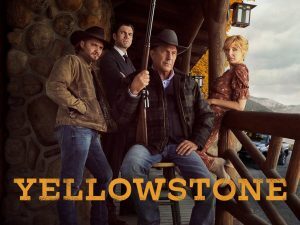 In today’s TV landscape, networks are drawn to well-established Intellectual Properties (IPs), making it crucial to do more than craft a compelling drama in a modest setting. The spotlight is now on sprawling franchise potentials, resembling a hydra with its multiple storylines. As expected, “Yellowstone,” the immensely popular modern Western on Paramount Network, has embarked on its own manifest destiny.
In today’s TV landscape, networks are drawn to well-established Intellectual Properties (IPs), making it crucial to do more than craft a compelling drama in a modest setting. The spotlight is now on sprawling franchise potentials, resembling a hydra with its multiple storylines. As expected, “Yellowstone,” the immensely popular modern Western on Paramount Network, has embarked on its own manifest destiny.
Set in a distinctive time period, the show’s creator, Taylor Sheridan, transitions from a neo-Western style to a proto-Western, complete with thrilling pistol duels and a sense of frontier justice.
Sheridan is known for creating shows and movies that, while not explicitly Western, embody the essence of classic Westerns. Works like Yellowstone, Sicario, Hell or High Water feature the iconic landscapes and character archetypes of a Western, seamlessly brought into the present day with a hint of revisionist storytelling.
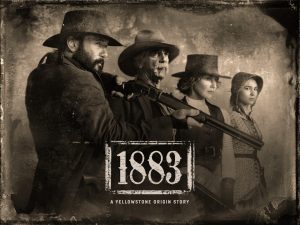 “1883” takes you on an epic journey with the Dutton family as they leave the heart of Texas for a Montana ranch, the central setting of this present-day series. Guided by the resolute James Dutton (played by Tim McGraw) and the weathered Shea Brennan (portrayed by Sam Elliott), the strong matriarch joins them, Margaret Dutton, brought to life by Faith Hill. However, traversing the unforgiving terrain reminiscent of the Oregon Trail isn’t a walk in the park, as any trailblazer familiar with its challenges would attest. Their intended destination being the Oregon coast, the narrative kicks off with a curious mystery: how did the Duttons veer so dramatically off course?
“1883” takes you on an epic journey with the Dutton family as they leave the heart of Texas for a Montana ranch, the central setting of this present-day series. Guided by the resolute James Dutton (played by Tim McGraw) and the weathered Shea Brennan (portrayed by Sam Elliott), the strong matriarch joins them, Margaret Dutton, brought to life by Faith Hill. However, traversing the unforgiving terrain reminiscent of the Oregon Trail isn’t a walk in the park, as any trailblazer familiar with its challenges would attest. Their intended destination being the Oregon coast, the narrative kicks off with a curious mystery: how did the Duttons veer so dramatically off course?
Reportedly conceived at the suggestion of studio executives, “1883” doesn’t come off as a mere franchise expansion—a credit to Sheridan’s storytelling prowess. What sets “1883” apart is the continuous reminder amidst the perils and hardships—the allure of the West, brilliantly captured with Paramount’s whopping $10-million-an-episode budget.
It’s a drama that showcases unparalleled scope, be it the elaborate Texan towns or the breathtaking vistas that lie ahead. The sheer investment, both financial and creative, in building this world is palpable. Not to mention the delightful surprise of star-studded cameos, including appearances by Billy Bob Thornton and Tom Hanks, adding an extra dash of excitement to the mix.
From the very start, a foreboding hint suggests inevitable ruin. While certain aspects of “1883” require a nuanced touch, it undeniably showcases Sheridan’s ability to elevate television to a cinematic level, proving that with the right vision and, of course, a substantial budget, TV can indeed rival the grandeur of the big screen.
In a previous blog post, I discussed the pivotal role of the opening scene, and both Yellowstone and 1883 showcase its significance. In the initial five minutes of 1883, the prequel to the Montana-set epic, devastation unfolds, painting a raw picture of a chaotic world. The sprawling landscape, despite the calamity, serves as a stunning backdrop, emphasising the contrast.
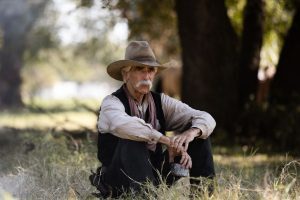 Yet, what truly makes 1883 compelling isn’t just the impressive effects. The series heavily relies on the presence of Sam Elliott, whose portrayal of Shea Brennan is nothing short of exceptional. In just a few episodes, Elliott masterfully illustrates the profound impact of a harsh world on a broken man. Together with LaMonica Garrett, who plays Shea’s Civil War comrade, Thomas, they breathe life into the narrative. While Tim McGraw and Faith Hill’s performances occasionally waver into the melodramatic, Elliott and Garrett bring a solemnity that lends authenticity, averting any hint of campiness.
Yet, what truly makes 1883 compelling isn’t just the impressive effects. The series heavily relies on the presence of Sam Elliott, whose portrayal of Shea Brennan is nothing short of exceptional. In just a few episodes, Elliott masterfully illustrates the profound impact of a harsh world on a broken man. Together with LaMonica Garrett, who plays Shea’s Civil War comrade, Thomas, they breathe life into the narrative. While Tim McGraw and Faith Hill’s performances occasionally waver into the melodramatic, Elliott and Garrett bring a solemnity that lends authenticity, averting any hint of campiness.
Interestingly, despite the array of prominent names and seasoned genre actors, Elsa’s narrative takes centre stage in 1883 to some extent. Elsa’s voiceover provides a unique outsider’s perspective, presenting the tale of a resilient teenager caught up in the wave of Manifest Destiny, facing dire threats at every turn.
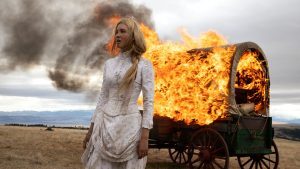
However, it’s important to note that Elsa’s voiceover, though a fascinating choice, can also be viewed as a flaw in scriptwriting.
It’s overwritten and sometimes bland, lacking genuine insight into whether Sheridan intends for it to be profound or if it’s a representation of how he thinks teenage girls wrote in 1883.
Moreover, this flaw has intensified the confusion between providing a character’s internal monologue and offering a genuine perspective from that character.
Elsa’s narration often encapsulates only a superficial sense of wonder, narrating an adventure that doesn’t predominantly involve her.
In conclusion, while 1883 showcases remarkable elements and performances, it’s not immune to the occasional scriptwriting pitfalls, especially concerning utilising voiceover and maintaining character authenticity throughout the narrative. These aspects can be areas for improvement, ensuring a more cohesive and engaging viewing experience for the audience.
Elsa’s segments in the show, though affected by Sheridan’s tendency to create drama around women by placing them in peril, aren’t lacking in substance. May, akin to Hill, may seem oddly modern in style, yet as mother and daughter, they believably complement each other.
Regarding pace, the show might feel slow for some; “1883” possesses a deliberate storytelling approach. It takes its time, steadily building up tension over several episodes before erupting into intense gunfire or action scenes.
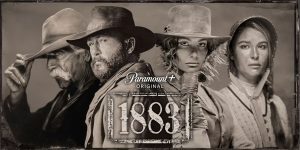 While the plot is certainly a part of it, the true essence lies in exploring the diverse characters populating this world. Each main character is multi-dimensional, possessing motivations driving their actions. Shea seeks to honour his late wife’s memory, immigrants search for their own free land, Elsa is on a journey of self-discovery, and James and Margaret yearn to keep their children safe.
While the plot is certainly a part of it, the true essence lies in exploring the diverse characters populating this world. Each main character is multi-dimensional, possessing motivations driving their actions. Shea seeks to honour his late wife’s memory, immigrants search for their own free land, Elsa is on a journey of self-discovery, and James and Margaret yearn to keep their children safe.
Every character has a purpose for embarking on this arduous journey, and as the season unfolds, their arcs naturally find resolution, one way or another. The fascinating aspect is that each journeyman embodies a different theme, a central focus of the show over time.
From innocence and young love as represented by Elsa to honour and regret epitomised by Shea, observing how these characters grapple with or embrace their qualities unfolds as a captivating and profoundly engrossing watch. The depth and evolution of these characters add significant depth and intrigue to the overall narrative.
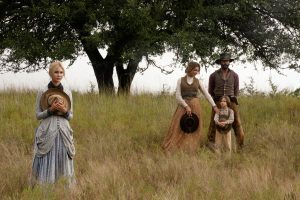 Despite its imperfections, “1883” possesses the essential elements—engaging characters, a vast scope, and a distinct vision—that could mark it as a promising new instalment in the “Yellowstone” franchise. What’s even more remarkable is that it breaks free from the typical spin-off trap of being too tied to its source material.
Despite its imperfections, “1883” possesses the essential elements—engaging characters, a vast scope, and a distinct vision—that could mark it as a promising new instalment in the “Yellowstone” franchise. What’s even more remarkable is that it breaks free from the typical spin-off trap of being too tied to its source material.
One notable aspect that stood out to me was Sheridan’s approach to the show’s beginning. Instead of a clichéd scene with Kevin Costner and a worn-out photo album, he opted for a more creative opening.
It’s refreshing to see a departure from overused narrative devices; it’s a testament to Sheridan’s storytelling finesse (with a slight exception regarding women’s voices).
So, for all you “Yellowstone” enthusiasts out there, “1883” is a series that absolutely deserves a spot on your watchlist. If you’re a budding scriptwriter, investing time in watching this show can be incredibly valuable. It offers a chance to learn from its notable writing strengths and, equally important, its areas for improvement.
Happy viewing and happy learning!
Verdict – 3.5/5 Stars in my book
The post TV Review – 1883 appeared first on Vered Neta.
September 17, 2023
Full Circle – Historical Novel – Synopsis
When Russians invade Prague, a young medical student kills a soldier in self-defence. As authorities hunt for her, she is smuggled beyond The Iron Curtain and sneaks across borders to reach the USA.
All Ana ever wanted was to become a doctor and use her skills to help people. However, when she reconnects with her childhood friend Jan, her entire life is turned upside down. She finds herself in opposition to her parents, the university, and even the local authorities, and eventually, the Russian government.
As a Jew, Ana’s mother, Helen, experienced unimaginable suffering and cruelty in the concentration camps during World War II. These experiences left her with lifelong psychological difficulties. Ana’s father, Pavel and Helen, worked hard to shield Ana from the horrors they had faced during the war. However, as Ana becomes more involved in activism in Prague with Jan, Helen becomes increasingly fearful for her only child. She worries that Ana will reject her experience and warnings.
During the Soviet invasion of Prague, Jan and Ana find themselves on the front lines of the protest. In the chaos, Ana accidentally kills a soldier and lives in constant fear of being discovered. She turns to Jan for comfort, only to discover that he is becoming increasingly withdrawn and erratic. Ana hopes her love can pull him back from his extreme ideas, but tragically, Jan self-immolates as a political statement.
Jan’s death crushes Ana, as helping people was her life mission, and all her hopes and dreams are now in tatters. She doubts herself and everything she once believed in. Knowing that the Soviets will soon be hunting her down, Ana formulates a daring plan to be smuggled beyond the Iron Curtain to the United States. Helen is heartbroken to let go of her only child but knows it’s the only way to ensure Ana’s safety. She makes Ana promise never to look back and focus on her new life in the United States.
Twenty years later, Ana is still keeping her promise. When the Berlin Wall falls in 1989, and the Velvet Revolution swiftly follows in Prague, Ana’s daughter Yael wants to know her mother’s secretive story, which Ana shares with her. With the election of a new president in Czechoslovakia, Ana knows it’s time to return to Prague and close the circle with the ghosts she left behind.
“Full Circle” raises important questions about what is more important in life: sticking to one’s ideals and principles or doing whatever it takes to survive. It challenges us to reconsider our understanding of freedom, bravery, and strength.
Would LOVE to get your thoughts and remarks on this synopsis.
What captures your heart, what intrigues you and what would you like to know about it.
Please share it with me in the comment box below
The post Full Circle – Historical Novel – Synopsis appeared first on Vered Neta.
August 6, 2023
BOOK VS. FILM: Firefly Lane – The Case for Non-Linear Storytelling
After finishing the first season of “Firefly Lane,” I couldn’t resist sending a WhatsApp message to my daughter: ” If you ever want to see what kind of teenager I was, you should check out ‘Firefly Lane.’ your mum was Kate during her teens and early twenties – the looks, behaviour, the whole package!” To my amusement, she responded with, “Not really my cup of tea for a TV show.” I guess her reaction is just like what Kate’s daughter, Marah, might say!
Anyway, after binge-watching the entire two-season show, I also felt compelled to dive into the book. I’ve always been a fan of Kristin Hannah’s work, especially “The Nightingale,” which I adored. Anything revolving around friendships between women has always appealed to me. So, I decided to download the book on my Kindle and give it a go.
After just a few chapters, I realised that this book provides an excellent opportunity to compare it with the TV show, so here goes my perspective!
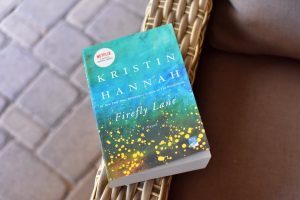 The Book
The BookIn the whirlwind summer of 1974, Kate Mularkey found herself at the bottom of the eighth-grade social ladder. But guess what? The universe had a surprise for her – the “coolest girl in the world” moves in just across the street and wants to be her friend! Tully Hart is like the whole package – beautiful, smart, and full of ambition.
Despite being total opposites, they become inseparable besties and promise to be friends forever! And their journey spans over three decades in the ever-changing Pacific Northwest. “Firefly Lane,” tells the heartwarming and powerful story of these two women and the incredible friendship that shapes their lives.
Tully is one determined soul from the get-go. She’s got a burning need to prove herself to the world. Growing up without a mom’s love, she longs for that unconditional affection. In the flashy eighties, she was all about seeking validation from guys, and in the nineties, she was hooked on television news. She chases her dreams like there’s no tomorrow, reaching for fame and success but also feels lonely.
Kate, on the other hand – has her own dreams too. Sure, she may not think her life will be extraordinary, but she secretly yearns for love, kids, and ordinary life. Deep down, she’s just as driven as Tully, even if she doesn’t show it in the same flashy way. But life has its surprises, and being a wife and mum changes her more than she could ever imagine. And, well, she can’t help but feel a twinge of envy for her famous bestie.
Through thick and thin, Tully and Kate stick together, weathering the storms of friendship – jealousy, anger, hurt, and all that jazz. They think they’ve faced it all until an act of betrayal threatens to tear them apart! Their courage and friendship are put to the ultimate test.
 My Review
My ReviewThe heart of the book lies in the remarkable friendship between Tully and Kate, and there’s something truly special about a novel that celebrates female bonds. You can clearly see why they became friends, and it’s fascinating to witness their growth and development, even though sometimes they remain unchanged.
Let’s dive into Tully’s character now. She’s quite complex and, honestly, not always the easiest to warm up to. Most people would label her as a narcissist and obnoxious or, in short… a Bitch. But, you know what? Despite her flaws, there’s something truly admirable about her relentless pursuit of becoming a successful journalist. Like me, navigating my career during the 80s, I remember how women were under immense pressure to excel in whatever they defined their career, lock down their emotions (and heart) and match the focus and ruthlessness often expected from men.
However, Tully’s self-centeredness can sometimes be overwhelming and come at a price. Sure, we can understand her struggles with her troubled relationship with her mother, which might evoke sympathy. But, at the same time, it’s challenging to embrace her and her behaviour fully.
On the other hand, there’s Kate, the epitome of the good girl. She marries, raises children, and dedicates herself to being a stay-at-home mom. She’s incredibly giving to her core, although she does have some regrets about certain choices and occasionally feels a tinge of jealousy towards Tully’s different type of success. Kate appears selfless, putting her passion for writing aside to be the perfect wife, mother, daughter, and friend.
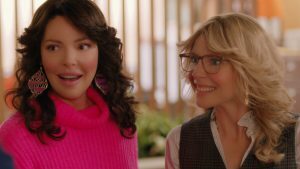 One challenge with the book is that these two women often come across as stereotypes – one is “good,” and the other is “bad.” They seem to embody conventional versus daring but lack the full complexity of real, flesh-and-blood characters. Tully is mainly depicted as a calculating climber who occasionally shows generosity, especially with her massive wealth. She becomes a role model to Marah, her best friend’s daughter (who happens to be her goddaughter), as she has more exciting stories and gifts to offer than the girl’s own mother.
One challenge with the book is that these two women often come across as stereotypes – one is “good,” and the other is “bad.” They seem to embody conventional versus daring but lack the full complexity of real, flesh-and-blood characters. Tully is mainly depicted as a calculating climber who occasionally shows generosity, especially with her massive wealth. She becomes a role model to Marah, her best friend’s daughter (who happens to be her goddaughter), as she has more exciting stories and gifts to offer than the girl’s own mother.
On top of that, I must admit the book’s length might feel a tad overwhelming, stretching beyond 400 pages. It makes you wonder why it needs to be this long. While it covers 30 years, some parts could have been trimmed down or even left out altogether.
I found much of the plot to be predictable – the way the characters behave and their values. The friends go through numerous fights and reconciliations. For instance, during their college years, Tully lashes out at Kate, questioning why she hangs out with her, while Kate’s teenage daughter rebels. Kate’s parents age, and Tully tries to reconnect with her drug-addicted, hippie mother. It becomes challenging to envision what truly binds them together after two decades, besides their dramatic beginnings on Firefly Lane.
 TV Show
TV ShowThe story, in a nutshell, follows the same essence as the book. Tully (played by Katherine Heigl) shines as the rebellious and vibrant one, with a past marked by visible and explicit challenges. On the other hand, Kate (portrayed by Sarah Chalke) is the quieter and more cautious friend, whose past hides its difficulties in less apparent ways. While Tully dedicates herself to her career as a talk show host, Kate, despite being a TV producer, finds her focus on domestic life, raising her teenage daughter.
Oh, and let’s not forget about Johnny (played by Ben Lawson), the hotshot producer who plays a vital role in both their lives and eventually becomes Kate’s husband. Through thick and thin, they support each other – from joyous moments to heartbreak, from wild table-dancing nights to sharing tales of disastrous and promising boyfriends.
Their bond is truly special, and it’s heartwarming to witness their unwavering friendship, no matter what life throws their way. They are each other’s confidants, always there to lift each other up and share the rollercoaster of life together.
 Rearrangements
RearrangementsThe TV show took a daring and exciting approach to adapt the book by turning its linear story into a non-linear one, where we jump between different decades.
In the book, the story unfolds decade by decade, following the friendship of Tully and Kate in a linear fashion. However, the TV series takes a creative approach by mixing up the timelines, jumping between the 1970s when they were teenagers (played by Ali Skovbye and Roan Curtis), the 1980s when they were in their twenties and the early 2000s when they were in their forties dealing with midlife challenges.
And here’s the cool part – these transitions are seamlessly woven together, putting their earlier and later selves in conversation with each other. It keeps us, as viewers, constantly guessing and adds a delightful element of wit to the storytelling.
This refreshing change in approach makes the series even more enjoyable and engaging. It’s great to see how the characters’ past and present experiences intertwine, giving us a deeper and richer understanding of their journey.
Some speculate that this choice was made to feature the famous actresses (Katherine Heigl and Sarah Chalke) from the very beginning, rather than introducing unknown actors portraying the characters as teenagers and then making a transition later. Whatever the reason, it works like a charm! The decision adds an extra layer of excitement to the show and keeps us hooked right from the start. And hey, there’s nothing wrong with that – it’s all about making the story more captivating for the audience!
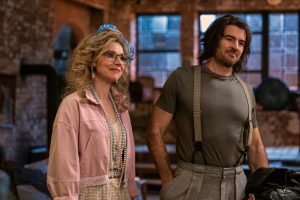 Changes
ChangesDue to the non-linear structure, some changes naturally had to be made (as is common in any adaptation). One of the significant changes involves the role of Johnny, Kate’s husband. In the book, after they tie the knot, they remain happily married without any separation. Kate’s parents also approve of him right from the start.
His role in the book is relatively minor, primarily serving as a means to fulfil Kate’s desire for love, marriage, and starting a family. The only issue that arises is Kate’s doubts about his love for her and a hint of jealousy, as Johnny had a one-night stand with Tully in the past.
Johnny’s character takes on a much deeper role in the TV show. He becomes more than just a husband; his passion for becoming a war correspondent is highlighted, something that was present in the book but not tied to a separation storyline. However, the main addition is Johnny’s backstory, especially his relationship with his own parents, especially his dad. This aspect is entirely absent in the book.
These changes in the TV series offer us a fresh and more intricate perspective on Johnny’s character, adding depth and complexity to his role in the story. It’s an exciting addition that gives the show a new dimension and keeps us even more invested in the characters’ lives and relationships.
Let’s talk about another change that was made in the TV show – the role of Tully’s grandmother. In the book, Tully’s grandmother played a significant part in her early life, and Tully deeply missed her when she passed away. However, in the TV series, her grandmother is portrayed as a strict and religious woman, whom Tully couldn’t stand. This change seems to serve the purpose of giving more prominence to Tully’s mother, Cloud, and providing an explanation for her rebellion against her own mother.
By showcasing this new dynamic between Tully’s grandmother and her mother, Cloud, the show delves deeper into Tully’s family background. It gives us a better understanding of the struggles she faced growing up and the reasons behind her choices and actions. This change adds depth to Tully’s character and makes the story more compelling for viewers, as we get to explore the complexities of her relationships and how they shaped her journey.
Another noteworthy change in the TV show revolves around Tully’s documentary movie. In the book, the documentary serves as a means for Tully to reconnect with her mother, Cloud. However, in the TV series, as Cloud plays a more prominent role (at least more than in the first book), the focus of the documentary shifts to the search for her father. The outcome remains somewhat similar, as Tully doesn’t manage to connect with either of her parents in the end.
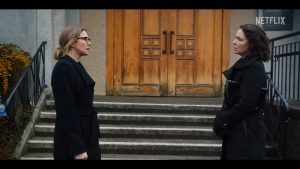 The most significant change the TV show has made revolves around the topic of betrayal between Tully and Kate. This betrayal has shattered their thirty-year-long friendship to the point of no return. For a betrayal to have such a profound impact, it must be a powerful one. However, although the betrayal appears dramatic in the TV show, it doesn’t carry the same weight as in the book. When watching the TV show, the reason for the betrayal doesn’t quite justify the harsh reaction of Kate. On the other hand, when you read about it in the book, there’s no doubt in anyone’s mind that this betrayal would indeed break the relationship between these two women.
The most significant change the TV show has made revolves around the topic of betrayal between Tully and Kate. This betrayal has shattered their thirty-year-long friendship to the point of no return. For a betrayal to have such a profound impact, it must be a powerful one. However, although the betrayal appears dramatic in the TV show, it doesn’t carry the same weight as in the book. When watching the TV show, the reason for the betrayal doesn’t quite justify the harsh reaction of Kate. On the other hand, when you read about it in the book, there’s no doubt in anyone’s mind that this betrayal would indeed break the relationship between these two women.
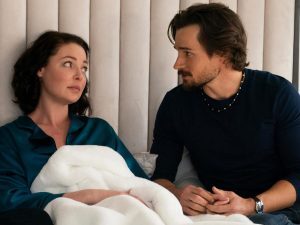 Additions
AdditionsOne of the additions to the TV show is the storyline of Tully’s instant marriage with Max and her miscarriage. In the book, it’s Kate who experiences a miscarriage before her pregnancy with Marah. However, the TV series chose to create a whole new plot for Tully, where a one-night stand unexpectedly leads to a marriage and pregnancy that ends with a miscarriage. For a fleeting moment, Tully contemplates choosing love and relationship over her career. This addition casts Tully in a more favourable light, as in the book, she comes across as a cold-hearted, obnoxious narcissist whose sole focus is on her career. Her softer side is only revealed in her relationship with Kate.
With this new storyline, Tully becomes a more vulnerable and relatable character, making it easier for viewers to connect with her on a deeper level. It humanises her and adds layers to her personality, beyond her ambition and professional success.
Another interesting addition to the TV show was a result of the changes in Johnny and Kate’s storyline. In the book, once they began dating and got married, they remained together until the end. However, in the TV series, they introduced a divorce following Johnny’s desire to work as a war correspondent in dangerous zones. Moreover, before their marriage, Johnny’s hesitation to propose led to a breakup, as Kate couldn’t see a future with him, even though they loved each other deeply. This alteration allowed the scriptwriters to explore another love relationship with an English guy for Kate.
This new storyline adds depth to Kate’s character, making her even more powerful and assertive. It shows that she knows exactly what she wants, even if it’s not solely focused on her career, and she fearlessly takes bold steps to pursue her goals.
The major additions to the TV show were focused on adapting the story to the era of 2020 and reflecting the social changes we’ve witnessed since the book was written in 2008. Two significant changes stand out. 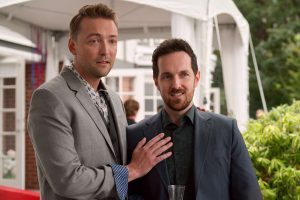 Firstly, Kate’s brother, Sean, who was barely mentioned in the book, becomes a secondary character in the TV series with his own storyline and character arc. Reflecting the 2020 era, Sean’s character is portrayed as a gay individual, and the show delves into the challenges he faced growing up in the 80s, especially with the fear of AIDS and living in a rural area. This addition allows us to explore the choices he had to make and the struggles he endured.
Firstly, Kate’s brother, Sean, who was barely mentioned in the book, becomes a secondary character in the TV series with his own storyline and character arc. Reflecting the 2020 era, Sean’s character is portrayed as a gay individual, and the show delves into the challenges he faced growing up in the 80s, especially with the fear of AIDS and living in a rural area. This addition allows us to explore the choices he had to make and the struggles he endured.
Secondly, the TV show addresses Tully’s sexual harassment storyline, which is absent in the book. Given the impact of the #MeToo movement, it’s not surprising to see such a significant issue being brought to light when depicting women’s careers in show business during the 80s and 90s. This addition provides a more realistic and relevant portrayal of the challenges women faced in those industries during that time.
By incorporating these elements, the TV show presents a more updated and inclusive narrative, acknowledging the evolving societal perspectives and shedding light on important issues that were not explored in the original book. These additions make the show more relevant and relatable to contemporary audiences while enriching the storytelling and character development.
 Verdict
VerdictThis one was an easy one. While I genuinely enjoy Kristin Hannah’s writing and find it engaging, I must say the TV show is a remarkable example of how a simple change in structure, from linear to non-linear, can transform an average story into something captivating, engaging, and downright exciting.
The non-linear approach opened up opportunities to develop additional storylines that beautifully supported the journeys of the two main characters, Tully and Kate. It was a chance for Kate to shine even brighter, breaking free from the “good-girl” stereotype that confined her in the book. Her character gained power and visibility, making her even more compelling to watch.
As for Tully, the non-linear structure gave us glimpses of her vulnerable side, making her appear less of a “bitch” than she was portrayed in the book. It humanised her character, showing us the complexities of her personality and allowing us to empathise with her struggles and emotions.
In the end, the choice to shift to a non-linear storyline turned a predictable tale into an exciting and unpredictable adventure. Viewers found themselves constantly guessing what would happen next, making the experience all the more thrilling. It truly took the story and its characters to new heights, making it a fantastic and immersive journey for all the viewers.
Now it’s YOUR turn – Tell us what you think about the non-linear structure – does it support a story or hinder it?
.
The post BOOK VS. FILM: Firefly Lane – The Case for Non-Linear Storytelling appeared first on Vered Neta.
July 3, 2023
Villains vs. Antiheroes: The Battle for Our Hearts and Minds.
Once upon a time, humans embarked on the incredible journey of storytelling. These tales became our compass, guiding us through the mysteries of the world, imparting wisdom, and igniting our imaginations. But hold on to your hats (and white hats, if you have them), because the landscape of heroes and villains has undergone a remarkable transformation!
In the past, stories were crystal clear. The Hero, donning a white hat, was the epitome of goodness and the protagonist who captured our hearts. Meanwhile, the Villain, often dressed in a sinister black hat, was the embodiment of wickedness, lurking in the shadows as the antagonist we loved to hate.
But hey, times have changed! In the last couple of decades, a new player has emerged: the antihero while not all Antagonists are Villains. This has turned our storytelling world upside down! It’s time to dive into the intriguing question: What sets villains apart from these enigmatic antiheroes?
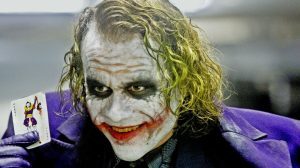
#1 – Moral Compass: Who’s Naughty or Nice?
Villains – These characters have thrown their moral compass out the window and fully embraced their wicked side. They revel in chaos, and power, and cause mayhem wherever they go. Despite their nefarious intentions, villains have a magnetic quality that draws us in, leaving us both fascinated and repulsed.
Think about The Joker from “The Dark Knight” The Joker, portrayed brilliantly by Heath Ledger, embodies the epitome of chaos and anarchy. With his maniacal laughter, smeared makeup, and unpredictable behaviour, he is the personification of a villain. He lacks any moral restraint and thrives on creating havoc in Gotham City. The Joker’s twisted mind and disregard for human life make him a captivating and terrifying villain.
Antiheroes – in contrast to villains, they occupy a morally grey area. They are flawed protagonists who often operate outside the boundaries of conventional heroism. Their actions may be driven by personal gain, survival, or a skewed sense of justice. Despite their questionable choices, antiheroes can elicit our empathy and keep us invested in their journeys.
A great example of it is Deadpool from “Deadpool” Deadpool, portrayed by Ryan Reynolds, who is the epitome of an antihero with a unique brand of humour and a propensity for violence. He breaks all the rules, constantly blurring the line between hero and villain. Deadpool’s motivations are driven by personal vendettas and self-interest, yet he occasionally demonstrates a twisted sense of justice. Despite his morally ambiguous nature, his wit and relatability have endeared him to audiences.
While villains embrace their wickedness without remorse, antiheroes challenge our conventional notions of heroism by navigating their own twisted moral compass. These characters keep us on the edge of our seats, questioning the boundaries of right and wrong and reminding us that not everything is as black and white as it seems.
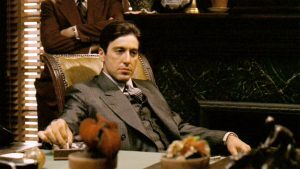 #2 – Sympathy and Relatability: Oh, We Get You!
#2 – Sympathy and Relatability: Oh, We Get You!
Villains – It’s a curious phenomenon that despite their reprehensible actions, villains often manage to evoke a strange sense of sympathy or captivate us with their troubled pasts. They challenge societal norms and embody our darker impulses, making them oddly intriguing.
Take Loki from the Marvel Cinematic Universe Loki, brilliantly portrayed by Tom Hiddleston, is a fan-favourite villain who consistently blurs the line between heroism and villainy. As the God of Mischief, Loki possesses a charisma and charm that draws us in, despite his treacherous acts. He struggles with feelings of inadequacy, betrayal, and a desperate desire for recognition and power. Loki’s complex background and internal conflicts make him a sympathetic villain, as we can’t help but understand his deep-seated need for validation.
Antiheroes – Unlike villains, they often elicit our empathy and relatability due to their complex and flawed nature. They navigate a morally ambiguous path, challenging our preconceived notions of heroism. Antiheroes remind us that even in our darkest moments, we are capable of making choices that define us.
Think of Michael Corleone from “The Godfather“. Michael Corleone, portrayed by Al Pacino, starts as a morally upright character who reluctantly gets drawn into his family’s mafia business. Over the course of the story, we witness his transformation into a ruthless and calculating figure. However, we can’t help but feel a sense of empathy for Michael as he grapples with loyalty, family obligations, and the weight of his decisions. His internal struggles and gradual descent into darkness make him a compelling and relatable antihero.
Villains and antiheroes both have the power to captivate us by challenging our notions of right and wrong. Whether it’s the villains’ troubled pasts that provide glimpses into their motivations or the antiheroes’ flawed humanity that resonates with us, these characters invite us to explore the complexities of the human psyche.
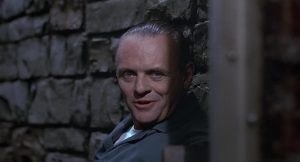 #3 – Protagonist vs. Antagonist: Who’s Stealing the Show?
#3 – Protagonist vs. Antagonist: Who’s Stealing the Show?
Villains – are the ultimate antagonists, the primary source of conflict and opposition to our beloved protagonists. They’re like those pesky flies that just won’t leave the hero alone, constantly testing their mettle and pushing them to their limits.
An interesting example is Hannibal Lecter from “The Silence of the Lambs” Hannibal Lecter, portrayed chillingly by Anthony Hopkins, is an iconic villain who captivates audiences with his intelligence and unnerving presence. As a brilliant and manipulative serial killer, Lecter becomes the formidable obstacle that young FBI agent Clarice Starling must face. His psychological games and menacing charm are scene-stealing. However, Hannibal Lecter is NOT the antagonist. Buffalo Bill is the main antagonist of the film.
Antiheroes – while villains play the role of antagonists, antiheroes take centre stage as the protagonists of their own stories. They often defy traditional notions of heroism, breaking the mould and challenging our expectations.
Tony Stark from the Marvel Cinematic Universe is a prime example of an antihero who commands the spotlight as the protagonist of the “Iron Man” series. Stark’s journey is defined by his arrogant and selfish beginnings, but as he confronts personal demons and the consequences of his actions, he evolves into a reluctant hero. Stark’s snarky wit, charisma, and transformation make him a compelling antihero who steals the show with his larger-than-life presence.
Villains and antiheroes have distinct roles in storytelling, with villains acting as the driving force of conflict and antiheroes taking on the dual role of protagonist and antagonist. Whether it’s the chilling and captivating presence of a villain or the complex and conflicted nature of an antihero, these characters bring a dynamic energy to the narrative, keeping us engaged and invested in their journeys.
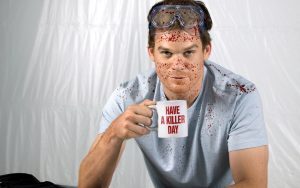
#4 – Complexity and Depth: It’s All in the Layers!
Villains – while villains are often associated with straightforward evil intentions, the best villains are those who possess layers of complexity that make them more than just one-dimensional evildoers. They become multi-faceted characters with intricate motivations and backstories that keep us intrigued.
One of the best examples of it is Killmonger from “Black Panther”. His character challenges the status quo and presents a compelling perspective on societal issues. Killmonger’s motivations stem from a deep-rooted sense of injustice and a desire to right the wrongs faced by his people. He embodies a mix of righteous anger, personal trauma, and a tragic backstory that makes him a nuanced and empathetic antagonist. Killmonger’s complexity forces us to question our own biases and perceptions, blurring the lines between villain and antihero.
Antiheroes – are known for their layers of complexity, which sets them apart from traditional heroes. Their internal conflicts, flaws, and struggles make them relatable and intriguing. They often grapple with their own demons and face moral dilemmas that challenge their sense of self.
Dexter Morgan, is a complex antihero in the TV series “Dexter.” By day, Dexter is a forensic blood spatter analyst, but by night, he’s a serial killer who targets other murderers. Dexter’s internal struggle between his need to kill and his desire to fit into society creates constant tension within him. We witness his inner turmoil as he grapples with his dark urges and attempts to maintain a facade of normalcy. Dexter’s internal monologues and moral complexities invite us into his conflicted psyche, blurring the lines between right and wrong.
Both villains and antiheroes benefit from complexity and depth. Villains with layers make their actions more nuanced, providing insight into their motivations and creating room for empathy or understanding. Antiheroes, on the other hand, thrive on complexity as it invites us to explore their internal struggles, moral dilemmas, and the choices they make. These complex characters challenge our perceptions and remind us that humanity is far from black and white, creating a captivating narrative experience.

#5 – Redemption and Growth: Can We Change Our Spots?
Villains – while villains are often associated with their wicked deeds, some stories offer them an opportunity for redemption and growth. This narrative arc allows us to explore the transformative power of change and raises the question of whether villains can truly turn over a new leaf.
Severus Snape from the Harry Potter series is a great example of it. He is a complex and enigmatic character. Initially portrayed as a cold and cruel professor who antagonizes Harry and his friends, Snape’s true allegiance and motivations are gradually revealed throughout the story.
As the series unfolds, it becomes evident that Snape’s actions are driven by a deep and unrequited love for Lily Potter, Harry’s mother. It is ultimately revealed that Snape has been working as a double agent, secretly protecting Harry and acting on Dumbledore’s orders to bring down Lord Voldemort.
Snape’s redemption arc is revealed posthumously, as his true intentions and sacrifices are unveiled. His unwavering loyalty to protecting Harry and his remorse for past actions showcase his growth and transformation. Snape’s redemption provides a poignant exploration of the complexities of human nature and the potential for redemption, even for characters initially perceived as villains.
Antiheroes – by their very nature, often embark on journeys of personal growth and self-discovery. They undergo transformative arcs that challenge their beliefs, values, and choices. This growth humanizes them and adds depth to their characters.
Jaime Lannister from “Game of Thrones” starts as a morally ambiguous character in “Game of Thrones.” Known as the Kingslayer for killing the mad king, his reputation is tarnished. However, as the series progresses, Jaime’s character undergoes a gradual evolution.
Jaime’s growth is evident in his relationships, particularly with Brienne of Tarth. Through their bond, he begins to challenge his own identity and the expectations placed upon him. He demonstrates acts of compassion and honour, eventually striving to become a better person. Jaime’s growth showcases the capacity for change within antiheroes and reminds us that even those with a tainted past can find redemption and seek a path of righteousness.
The themes of redemption and growth offer a compelling exploration of the human condition. Whether it’s a villain finding redemption through a selfless act or an antihero’s transformative journey, these examples highlight the power of change and the potential for growth within even the most complex characters
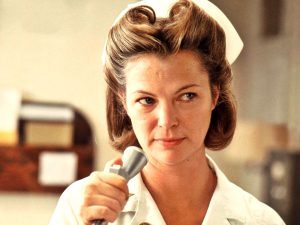 #6 –
Impact on Society: Mirror, Mirror, on the Wall!
#6 –
Impact on Society: Mirror, Mirror, on the Wall!
Villains – often have a profound impact on society within the realm of storytelling. Their actions and ideologies serve as a mirror, reflecting the flaws and darker aspects of society itself. They challenge societal norms, expose corruption, or embody the consequences of unchecked power.
Nurse Ratched from “One Flew Over the Cuckoo’s Nest” is a prime example of a villain whose impact on society is both chilling and thought-provoking. As the head nurse in a mental institution, Nurse Ratched embodies the oppressive control and abuse of power within the healthcare system.
Her authoritarian rule and manipulation of patients not only highlight the flaws within the institution but also expose the larger issue of systemic oppression and the dehumanization of individuals. Nurse Ratched’s impact on society is significant, as she represents the stifling effects of conformity and the dangers of unchecked authority. Her character serves as a stark reminder of the consequences of a society that values control over compassion.
Antiheroes – they, too, have an impact on society, but in a different way. Their actions and ideologies often challenge conventional norms, shining a light on societal hypocrisy and inspiring change. They become catalysts for reflection and rebellion.
Tyler Durden from “Fight Club” offers an intriguing example of an antihero whose impact on society reverberates beyond the confines of the story. Tyler Durden, portrayed by Brad Pitt, is a charismatic and anarchic character who challenges the consumerist culture and societal expectations that dominate modern life.
Through the creation of Fight Club, a secretive underground organization that rejects societal norms, Tyler Durden becomes a symbol of rebellion and liberation. He inspires a generation of disillusioned individuals to question the materialistic values imposed upon them. Tyler’s impact on society is disruptive, as he encourages people to break free from the confines of a shallow and conformist existence, albeit through controversial means.
In Conclusion – From wicked villains to morally ambiguous antiheroes, these characters are the spice that adds flavour to our stories. Whether we’re bewitched by the allure of villains or captivated by the complexities of antiheroes, one thing is certain: they keep us entertained, fascinated, and coming back for more. So, grab your popcorn, cosy up, and enjoy the delightful dance between good and evil!
Now it’s YOUR turn – Can you think of any other examples of villains or antiheroes that challenge the traditional archetypes?
Would love to get your input in the comment box below.
The post Villains vs. Antiheroes: The Battle for Our Hearts and Minds. appeared first on Vered Neta.
June 25, 2023
From Ordinary to Extraordinary: Demystifying Character Arc.
When I first delved into scriptwriting and the art of storytelling, character arcs seemed like an intimidating puzzle. It took me time but I’ve cracked the code and broken it down into simple steps that will have you mastering character arcs in no time. So let’s embark on this adventure together, with a sprinkle of fun and a dash of excitement, as we demystify the magic behind character arcs.
All in all, we are talking about 7 steps that take place in every Character Arc which takes them from “Ordinary” to “Extraordinary”
Here are the 7 steps:
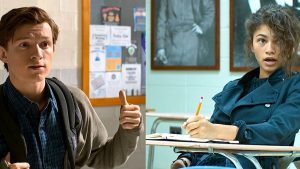
#1: The Starting Point – Where It All Begins.
Picture this: a character chilling in their comfort zone, sipping on a milkshake while the world goes by.
Think “Spider-Man: Homecoming” where our friendly neighbourhood Spider-Man, aka Peter Parker, starts off as a high school student dealing with the everyday struggles of adolescence. Even if your high school years have long gone, you can still relate, right?
Or take Bilbo Baggins from J.R.R. Tolkien’s “The Hobbit.” Bilbo starts as a timid and unadventurous hobbit, comfortable in his cosy hole in the Shire. This initial state allows us to understand the character’s baseline and sets the stage for the transformation to come.
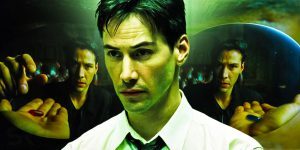 #2: The Catalyst: Shake, Rattle, and Roll!
#2: The Catalyst: Shake, Rattle, and Roll!
Now, let’s throw in a twist! Imagine a lightning bolt striking your character’s world, turning it upside down.
Think about Thomas Anderson, a computer programmer living a seemingly ordinary life in the movie “The Matrix”. One day a mysterious hacker known as Morpheus contacts him, revealing that the world he knows is an illusion created by sentient machines. This revelation acts as the catalyst that triggers Thomas’s transformation into Neo, the chosen one who will lead humanity’s resistance against the machines. As the truth unfolds, Neo is thrown into a mind-bending adventure where he must confront his doubts, embrace his destiny, and navigate a reality far beyond anything he ever imagined.
Or take the case of Harry Potter in J.K. Rowling’s “Harry Potter and the Sorcerer’s Stone.” The arrival of a mysterious letter from Hogwarts acts as a catalyst, shattering Harry’s mundane existence and revealing his magical destiny. This catalyst drives the character towards change and sets the story in motion.
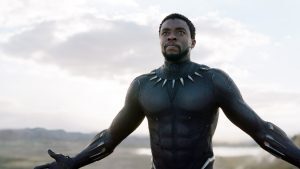
#3: Goals and Motivations: Fueling the Fire Within.
Okay, now your character needs a purpose that drives them to take action. In “Black Panther,” T’Challa, the newly crowned king of Wakanda, sets out to protect his people and embrace his role as the Black Panther. His goal? To honour his father’s legacy and bring justice to the world. Wakanda forever!
Or consider the character arc of Katniss Everdeen in Suzanne Collins’s “The Hunger Games.” When Katniss volunteers as tribute to save her sister, her primary goal becomes survival. This motivation fuels her actions throughout the series, shaping her growth and transformation.
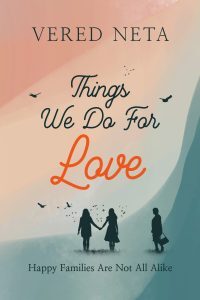
#4: Obstacles and Challenges: Bring on the Drama!
Let’s spice things up with obstacles that make your character’s journey a rollercoaster.
In the hit show “Game of Thrones,” Tyrion Lannister faces countless challenges, from political power struggles to personal betrayals. But hey, he manages to use his wit to navigate those treacherous waters. Cheers to resilience!
In my latest novel “Things We Do For Love.” This is where the drama really kicks into high gear! Daisy, our determined protagonist, is facing a multitude of obstacles. On one hand, she’s tirelessly caring for her ageing parents, ensuring their comfort and well-being. On the other hand, she’s running her own clinics, pouring her heart and soul into her work. And let’s not forget her burning desire to conceive a child, despite the challenges that come with trying at a later age.
But beneath the surface, there’s a storm of resentment brewing within Daisy. She carries grudges and unresolved issues towards her mother and sisters. These deep-seated emotions threaten to unravel her carefully constructed life, adding an extra layer of tension and conflict to her already hectic journey.
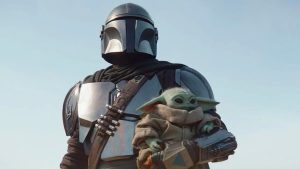 #5: Growth and Change: Embrace the Glow-Up!
#5: Growth and Change: Embrace the Glow-Up!
It’s time for your character to level up and show some serious growth.
Look no further than “The Mandalorian” and the unforgettable character arc of the mysterious bounty hunter. Throughout the series, he transforms from a lone wolf to a protector and father figure. Baby Yoda has that effect on people, doesn’t he?
Another classic example is the character arc of Ebenezer Scrooge in Charles Dickens’s “A Christmas Carol.” Scrooge’s encounters with the Ghosts of Christmas Past, Present, and Future force him to confront his selfishness and transform into a kind-hearted individual. The growth and change should be evident through shifts in beliefs, values, or behaviour, reflecting a profound internal transformation.
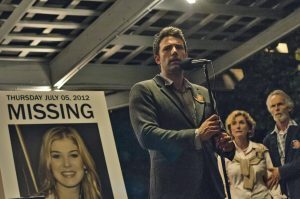 #6: Climax: Lights, Camera, Action!
#6: Climax: Lights, Camera, Action!
We’ve arrived at the epic showdown!
In “Avengers: Endgame,” Iron Man (Tony Stark) reaches his climactic moment when he makes the ultimate sacrifice, wielding the Infinity Gauntlet to defeat Thanos and save the universe. Cue the tears and standing ovation for a hero’s journey fulfilled!
In “Gone Girl” by Gillian Flynn. The climax arrives like a rollercoaster ride as Amy’s meticulously planned disappearance and frame-up of her husband, Nick, takes centre stage. In a mind-blowing confrontation, secrets are laid bare, and the truth emerges from the shadows. Brace yourself for a nail-biting showdown that will leave you breathless!
In this example, we’re on the edge of our seats, cheering and gasping as Amy’s devious scheme reaches its boiling point. It’s like watching a cat-and-mouse game with a sinister twist, where the climax reveals the shocking depths of her manipulation. You won’t be able to put the book down!
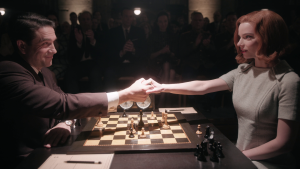
#7: Resolution: Embracing the New Self.
Now sit back and witness the character’s transformation come full circle.
Take “The Queen’s Gambit” as an example, where Beth Harmon evolves from a troubled orphan to a world-renowned chess champion. Her resolution showcases her growth, resilience, and the triumph of the human spirit. Checkmate!
Or Jane Austen’s “Pride and Prejudice,” Elizabeth Bennet’s character arc concludes with her shedding her initial prejudice and finding love with Mr. Darcy. The resolution offers closure, allowing the audience to witness the character’s evolved state and reflect on the changes they have undergone.
In Conclusion – Character arcs are the heart and soul of storytelling, capturing the essence of transformation and growth. By simplifying the process into starting points, catalysts, goals, obstacles, growth, climax, and resolution, we can better understand and craft compelling character journeys. Remember, this is the classic model, but not all protagonists need to follow these stages. So, embrace the magic of character arcs and let your imagination run wild as you create unforgettable characters and stories!
IMPORTANT NOTE – While these steps provide a powerful framework, remember that storytelling is an art, and rules can be broken to suit your unique narrative style. So have fun, experiment, and create your own path to storytelling greatness!
Now it’s YOUR turn – Do you prefer stories with predictable character arcs or ones that subvert expectations? Would love to get your input in the comment box below.
The post From Ordinary to Extraordinary: Demystifying Character Arc. appeared first on Vered Neta.
June 18, 2023
Why Every Story Needs a Past – Unveiling the Power of Backstories.
Let’s talk a bit about backstories. I mean it’s called BACKstory and readers want the STORY. So why do we need it?
First, let’s define what is a backstory. A backstory is basically the history of a character, setting, or plot that comes before the story’s main events. It’s like the secret sauce that adds depth and flavour to your narrative.
So, why do we need backstories? Well, they do a bunch of awesome things:
Here are 7 Reasons to Have a Backstory:
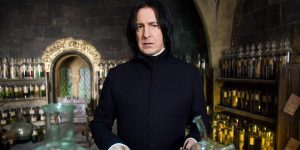
#1: Character Development,
A well-crafted backstory breathes life into characters, giving them depth and complexity. By revealing their past experiences, motivations, and traumas, you create multi-dimensional individuals that audiences can connect with.
Take the character of Severus Snape in J.K. Rowling’s “Harry Potter” series. Snape’s backstory, including his unrequited love for Lily Potter, adds layers of complexity to his actions throughout the series, making him one of the most intriguing and memorable characters.
Or “Forrest Gump,” the titular character’s backstory reveals his struggles with a learning disability and the influence of his loving mother. These elements shape Forrest’s kind-hearted nature and unwavering optimism throughout the film.
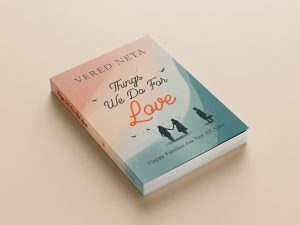 #2: Enhancing Plot.
#2: Enhancing Plot.
A compelling backstory can provide the necessary context to drive the main plot forward. They are like roadmaps for your plot. They give you the backstory (pun intended!) on conflicts, motivations, and key events.
Knowing where characters come from can drive the story forward with purpose and direction. It’s like having a GPS for storytelling.
In my own novel, “Things We Do For Love” the backstory of Verity explains why she was so determined to have her own daughters following the academic path and not what they wanted to do.
Christopher Nolan’s “Inception” skillfully weaves a complex narrative, where the backstory of Cobb’s guilt and loss drives his actions and decisions throughout the film. The backstory’s revelation not only creates suspense but also shapes the direction of the story, making it more engaging and impactful.

#3: Emotional Connection.
Backstories tug at our heartstrings. When we learn about the struggles, successes, or heartbreaks a character has gone through, it creates an emotional bond. We root for them, we cry with them, and we celebrate their victories. It’s like cheering on your favourite sports team – you’re emotionally invested!
In Disney-Pixar’s “Finding Nemo” opens with a heartbreaking backstory where Nemo’s mother and siblings are tragically killed, leaving Marlin as the overprotective father. This emotional setup establishes a powerful connection with Marlin’s determination to find his son.
In Khaled Hosseini’s “The Kite Runner,” the backstory of Amir and Hassan’s childhood friendship in Afghanistan builds a strong emotional connection. As readers witness their shared experiences and eventual separation, they become deeply invested in the characters’ journeys and their reconciliation.
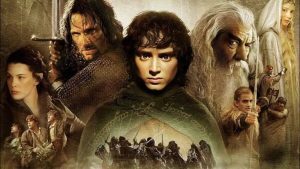
#4: World-Building.
In many fantasy and science fiction works, world-building is crucial for immersing audiences in a fictional universe. A rich backstory allows authors and filmmakers to create vibrant and believable worlds.
J.R.R. Tolkien’s “The Hobbit” and “The Lord of the Rings” series feature extensive backstories that establish the history, races, and geography of Middle-earth.
These rich backstories create a vivid and immersive world for the adventures of Bilbo Baggins and Frodo Baggins.
The Marvel Cinematic Universe masterfully employs backstories to build its expansive world. Films like “Iron Man” and “Captain America: The First Avenger” delve into the backstories of their respective superheroes, providing the foundation for the interconnected universe.
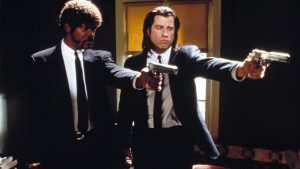 #5 – Foreshadowing and Plot Twists.
#5 – Foreshadowing and Plot Twists.
Backstories can be sneaky little devils. They drop hints and clues about what’s to come, building suspense and surprise. It’s like leaving breadcrumbs for your audience to follow, only to shock them with unexpected twists and turns.
Agatha Christie’s “And Then There Were None” presents a group of strangers invited to an island, and through individual backstories, hints and clues are dropped about their dark secrets. These backstories foreshadow the impending mystery and add layers of suspense.
In Quentin Tarantino’s classic movie “Pulp Fiction,” the nonlinear storytelling approach incorporates various character backstories that intersect and foreshadow unexpected connections and plot twists.
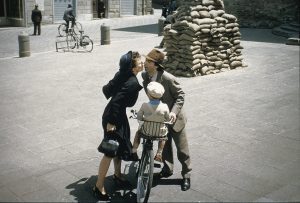 #6: Exploring Themes.
#6: Exploring Themes.
A backstory can provide an opportunity to explore deeper thematic elements within your story. By delving into the past experiences and events that shape a character or a world, backstories can provide a platform for addressing and exploring deeper themes and messages
Margaret Atwood’s “The Handmaid’s Tale” delves into the dystopian world of Gilead, but it is through the protagonist’s backstory, Offred’s previous life, relationships, and loss, that the themes of identity, freedom, and feminism are fully explored. The backstory adds layers of meaning to the narrative, elevating it beyond a simple dystopian tale.
In the film “Life is Beautiful” directed by Roberto Benigni, the backstory of Guido, a Jewish man, and his experiences during the Holocaust explores themes of love, resilience, and the power of imagination in the face of unimaginable tragedy. The backstory sets the stage for a heart wrenching exploration of humanity’s capacity for hope and survival.
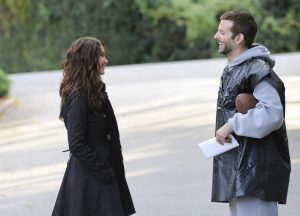
#7: Plausibility and Authenticity.
A good backstory makes your story believable. It connects the dots and makes everything feel consistent and authentic.
Readers or viewers can follow along and say, “Yeah, that makes sense!” It’s like having a solid foundation for your storytelling.
In J.D. Salinger’s “The Catcher in the Rye,” the backstory of the protagonist, Holden Caulfield, gives readers insight into his troubled upbringing and the emotional turmoil he experiences. This backstory adds authenticity and plausibility to his rebellious and disillusioned behaviour.
In “Silver Linings Playbook,” the main characters’ backstories, including their struggles with mental health, provide a realistic context for their complex personalities and the challenges they face in their relationships.
In Conclusion – Backstories are like the secret sauce that adds flavour and depth to your storytelling. They make your characters more real, your world more believable, and your plot more captivating. So, go ahead and dive into the exciting world of backstories. Your readers or viewers will thank you for it!
Now it’s YOUR turn – What is your favourite example of a well-crafted backstory in a book or movie? How did it enhance your connection with the characters or the story?
Would love to get your input in the comment box below.
The post Why Every Story Needs a Past – Unveiling the Power of Backstories. appeared first on Vered Neta.
May 21, 2023
From Suburbia to the Underworld: The Rise of ‘Mom & Dad Do Crime’
Unless you were living under a rock or on a different planet, you’ve probably noticed the rise since 2008 of the phenomena called “Mom & Dad Do Crime”. It’s all about everyday folks diving headfirst into thrilling, illicit adventures that blur the line between right and wrong.
This sudden rise can be attributed to several factors. Firstly, there has been a growing demand for diverse and complex narratives that challenge traditional gender roles and stereotypes. Audiences are seeking out stories that showcase the strength, resilience, and resourcefulness of individuals who are often underestimated or overlooked, such as older people and women.
Additionally, the genre provides a fascinating exploration of the moral gray areas, blurring the lines between right and wrong. This moral complexity resonates with viewers who are intrigued by the inner conflicts and tough choices faced by the protagonists.
Furthermore, the genre offers a perfect blend of drama, thrills, and humor, appealing to a wide range of audiences. The combination of tense crime scenarios with relatable, everyday characters adds a layer of authenticity and relatability.
Ultimately, the rise of the “Mom & Dad Do Crime” genre reflects a shift in storytelling preferences, highlighting the desire for dynamic, multidimensional characters and narratives that challenge conventions and captivate audiences.
So let’s go into the elements that define this rising phenomenon,with some examples that have left a lasting impact on viewers.
Here Are 5 Elements of This Genre: #1 – Desperation in the Face of Financial Struggles.
#1 – Desperation in the Face of Financial Struggles.
In recent years, many people have faced economic instability and financial hardships. This relatable theme is at the heart of the “Mom & Dad Do Crime” genre, which explores how ordinary individuals can be driven to extraordinary measures when faced with tough circumstances.
Financial struggles can create a sense of desperation and a longing for a better life or a way out of their predicament. The characters in these stories often find themselves caught in a cycle of debt, struggling to make ends meet and provide for their families. They feel trapped, with limited options and the constant fear of losing everything they hold dear.
Desperation becomes a powerful motivator for these characters to step outside the boundaries of the law. They spot an opportunity to solve their financial woes and secure a brighter future for their loved ones. It’s a risky decision, as they weigh the potential benefits against the consequences of their actions.
This element brings depth to the characters and their choices, making them relatable and human. Audiences can empathize with the challenges and pressures they face. It also raises thought-provoking questions about what individuals would do in similar situations and challenges traditional notions of right and wrong.
Shows like “Good Girls” exemplify this, introducing us to three suburban mothers burdened by financial worries who decide to rob a grocery store. As their story unfolds, their desperation for money leads them down unexpected and thrilling paths, keeping audiences on the edge of their seats.
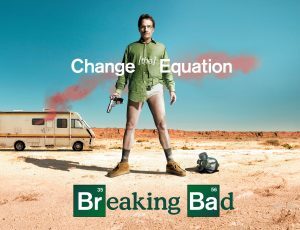
#2 – Moral Ambiguity and Ethical Dilemmas.
Moral ambiguity and ethical dilemmas lie at the centre of the captivating “Mom & Dad Do Crime” genre, where the lines between right and wrong become delightfully blurred. These stories transport both the characters and the audience into a morally grey landscape, compelling them to confront tough choices and the consequences that follow.
Within these narratives, everyday protagonists find themselves thrust into extraordinary circumstances. Driven by noble intentions like protecting their loved ones or seeking justice, their desperate situations push them towards engaging in illegal activities.
These characters are not your average criminals; they are relatable individuals wrestling with conflicting emotions. They must carefully weigh the potential benefits of their actions against the harm they may cause. As viewers, we become emotionally invested in their journey, empathizing with their internal struggles and contemplating the ethical implications of their choices.
The exploration of moral ambiguity within these stories encourages us to question our own beliefs and confront the complexities of real-life ethical dilemmas. It ignites thought-provoking conversations about the lengths we would go to protect our loved ones and the boundaries we might cross. These tales often present challenging questions about justice, survival, and the flaws embedded within our societal systems.
A significant strength of this genre lies in its ability to challenge traditional notions of heroes and villains. It showcases the multifaceted nature of human behavior, reminding us that even those with good intentions can find themselves in morally compromised situations.
The unforgettable series “Breaking Bad” offers a prime example. Walter White, a mild-mannered chemistry teacher turned methamphetamine manufacturer, delves into a criminal underworld, blurring the line between good and evil. As his actions become increasingly heinous, viewers are left questioning their own sense of right and wrong.
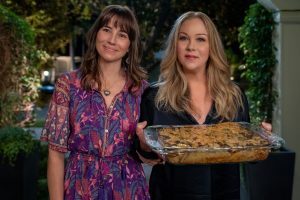
#3 – The Clash of Ordinary Lives and Criminal Activities.
In the realm of the “Mom & Dad Do Crime” genre, one of the key elements that captivate audiences is the clash between the ordinary lives of the protagonists and their foray into criminal activities. These stories highlight the stark contrast between their everyday routines and the dangerous, illicit world they find themselves entangled in.
This clash between their ordinary lives and criminal activities creates a tension that keeps viewers on the edge of their seats. We witness the characters struggling to maintain a façade of normalcy while navigating the complexities of their newfound criminal roles. They may attend PTA meetings, hold down day jobs, or participate in community events, all while secretly juggling the demands of their criminal endeavours.
The clash between ordinary lives and criminal activities adds layers of complexity to the character’s motivations and decisions. They are not seasoned criminals, but rather individuals grappling with their dual identities. They must balance the responsibilities and expectations of their everyday lives with the high-stakes world of crime. This internal conflict adds depth to their character development and keeps audiences emotionally invested in their journey.
Moreover, this clash provides fertile ground for storytelling dynamics. It allows for intriguing plot twists, as the characters navigate the challenges of keeping their criminal activities hidden from their families, friends, and the authorities.
Shows like “Good Girls” and “Dead to Me” epitomize this clash between ordinary lives and criminal activities. The protagonists are suburban women leading seemingly typical lives, but they are forced to confront their own capabilities and adapt to the demands of their newfound criminal roles. Their struggles to maintain a sense of normalcy while engaging in illicit activities create compelling storylines that keep viewers hooked.
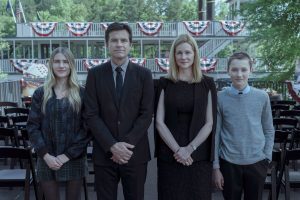
#4 – Unforeseen Consequences and Escalation.
The element of unforeseen consequences and escalation is a driving force in the captivating world of the “Mom & Dad Do Crime” genre. It explores the ripple effects of the character’s choices and actions, often leading to unforeseen and increasingly dire outcomes.
What starts as a seemingly simple act spirals into a series of events that escalate in intensity and complexity. The attraction of this element lies in the unpredictable nature of the consequences. The characters find themselves in a constant battle against the unexpected twists and turns that arise from their criminal activities.
In “Ozark,” we follow the story of Marty Byrde, a financial planner who gets caught up in a dangerous money-laundering scheme for a Mexican drug cartel. Marty’s initial plan is to relocate his family to the Ozarks and set up a legitimate business to launder the cartel’s money.
However, as the story unfolds, unforeseen consequences quickly come knocking at his door. The escalating consequences in “Ozark” are relentless, and Marty finds himself trapped in a web of deceit, violence, and ever-increasing danger. His decisions and actions have a domino effect, leading to a chain reaction of unexpected events that threaten his life and the lives of his loved ones.

#5 – Humor and Quirkiness.
The element of humour and quirkiness in the “Mom & Dad Do Crime” genre adds a delightful and unexpected layer to these stories, often providing comic relief amidst the tension and intensity of the criminal activities. This element serves to balance the darker themes and adds a unique flavour to the genre.
in “Weeds,” humour plays a prominent role as the show infuses witty dialogue, comedic situations, and offbeat characters into its storyline. Nancy, the protagonist, finds herself navigating the complexities of the drug trade while trying to maintain a façade of normalcy in her suburban community. The contrast between her seemingly ordinary life as a single mom and her unconventional career choice creates numerous humorous moments throughout the series.
The quirkiness of “Weeds” stems from the eccentric and colourful characters that Nancy encounters on her journey. These characters often bring comedic relief through their unique quirks, idiosyncrasies, and humorous interactions with Nancy.
The humor and quirkiness in “Weeds” serve multiple purposes. They provide comic relief amidst the more serious themes of drug dealing and its consequences. The lighthearted moments add levity to the story, allowing the audience to enjoy the series in a lighter and more entertaining way. Additionally, the quirkiness of the characters adds depth and complexity to the narrative, making the show a memorable and distinct entry in the genre.
In Conclusion – “Mom & Dad Do Crime” offers a thrilling and entertaining exploration of ordinary individuals pushed to extraordinary lengths. It challenges traditional notions of heroes and villains, blurs the lines between right and wrong, and delves into the complexities of human nature. So, grab your popcorn, buckle up for a wild ride, and immerse yourself in the thrilling world of moms and dads breaking bad.
Now it’s YOUR TURN – Share your favourite “Mom & Dad Do Crime” TV show or movie, and tell me why it stands out to you.
Would love to get your input in the comment box below.
The post From Suburbia to the Underworld: The Rise of ‘Mom & Dad Do Crime’ appeared first on Vered Neta.



